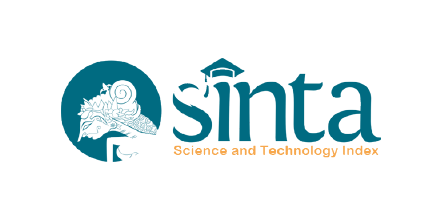Does the Provision of Assistive Technology Increase Disability Employment?
DOI:
https://doi.org/10.21776/ub.ijds.2022.009.02.04Keywords:
Assistive technology, Disability employment, PRISMA framework, Systematic review, Workplace accommodationAbstract
This paper examines various literature regarding the relationship between the provision of assistive technology (AT) and workplace integration for people with disabilities (PwD). A systematic review was conducted to map existing literature using the PRISMA framework in the last ten years. This study reveals that AT has an enormous significance in the employment of PwD. However, the provision of AT as workplace accommodations is not always uncomplicated as three aspects mainly impact it: employers’ perspective, accessibility of AT, and the availability of support from vocational and rehabilitation services. It is suggested that the provision of AT as workplace accommodations to increase disability employment should be supported collectively by society, with employers and the government as critical players. This study contributes to the perspectives of managers and the government by highlighting the roles they could carry out to create a more accessible provision of AT and an inclusive work environment.
References
Ababneh, R.I. (2015). Disabled employees in Jordanian public sector: An exploratory study. The International Journal of Public Sector Management, 29(2), 164-182. https://doi.org.10.1108/IJPSM-03-2015-0041
Adioetomo, S. M., Mont, D., & Irwanto. (2014). Persons with disabilities in Indonesia:
Empirical facts and implications for social protection policies. Commissioned report, Demographic Institute, Faculty of Economics, University of Indonesia in collaboration with Tim Nasional Percepatan Penanggulangan Kemiskinan (TNP2K), Jakarta. http://www.tnp2k.go.id/downloads/persons-with-disabilities-in-indonesia-empirical-facts-and-implications-for-social-protection-policies
Aleksandrova, O. & Nenakhova, Y. (2019). Accessibility of assistive technologies as a factor in the successful realization of the labor potential of persons with disabilities: Russia’s experience. Societies, 9(4). https://doi.org.10.3390/soc9040070
Babu, R. & Heath, D. (2017). Mobile assistive technology and the job fit of blind workers. Journal of Information, Communications and Ethics in Society, 15(2), 110-124. https://doi.org. 10.1108/JICES-10-2016-0041
Cameron, L., & Suarez, D.C. (2017). Disability in Indonesia: What can we learn from the data. Report, The Australia Indonesia Partnership for Economic Governance in collaboration with Monash University and the Australian Government, Sydney. https://fbe.unimelb.edu.au/__data/assets/pdf_file/0011/2615375/Disability-in-Indonesia-August-2017.pdf
Caron, L. (2020). Disability, employment, and wages: Evidence from Indonesia. International Journal of Manpower, 42(5), 866-888. https://doi.org.DOI 10.1108/IJM-01-2020-0022
Davis, L. (2005). Disabilities in the workplace: Recruitment, accommodation, and retention. AAOHN Journal, 53(7), 306-312. https://doi.org/10.1177/216507990505300705
Denny-Brown, N., O’Day, B., & McLeod, S. (2015). Staying employed: Services and supports for workers with disabilities. Journal of Disability Policy Studies, 26(2), 124-131. https://doi.org/10.1177/1044207315583899
Dong, S., Davis, W., & Mamboleo,G. (2020). Differences in workplace accommodations requests among college and high school graduates. Journal of Rehabilitation, 86(4), 4-13.
Dong, S., Warner, A., Mamboleo,G., Guerette, A., & Zalles, M.Z. (2017). Barriers in accommodation process among individuals with visual impairment. Journal of Rehabilitation, 83(2), 27-35.
Fuhrmann, F., Scholl, M., & Bruggemann, R. (2018). How can the empowerment of employees with intellectual disabilities be supported? Social Indicators Research, 136(3), 1269-1285. https://doi.org/10.1007/s11205-017-1666-5
Goering, S. (2015). Rethinking Disability: The Social Model of Disability and Chronic Disease. Current Reviews in Musculoskeletal Medicine, 8, 134-138. https://link.springer.com/article/10.1007/s12178-015-9273-z
Gunawan, T., & Rezki, J.F. (2022). Mapping workers with disabilities in Indonesia: Policy suggestions and recommendations. Report, International Labour Organization (ILO), Indonesia. https://www.ilo.org/jakarta/whatwedo/publications/WCMS_836028/lang--en/index.htm
Huang, I.C. & Chen, R.K. (2015). Employing people with disabilities in the Taiwanese workplace: Employers’ perception and considerations. Rehabilitation Counseling Bulletin, 59(1), 43-54. https://doi.org.10.1177/0034355214558938
Jetha, A., Bowring, J., Furrie, A., Smith, F., & Breslin, C. (2018). Supporting the transition into employment: A study of Canadian young adults living with disabilities. Journal of Occupational Rehabilitation, 29(1), 140-149. https://doi.org.10.1007/s10926-018-9772-z
Johnston, P., Jongbloed, L., Stainton, T., & Drynan, D. (2014). Can assistive technology help people with disabilities obtain employment? An examination of overcoming barriers to participation in British Columbia, Canada. International Journal of Disability, Community & Rehabilitation, 13(1).
Kulkarni, M., & Kote, J. (2013). Increasing employment of people with disabilities: The role and views of disability training and placement agencies. Employee Responsibilities and Rights Journal, 26(3), 177-193. https://doi.org.10.1007/s10672-013-9216-z
Kuznetsova, Y., & Bento, J.P.C. (2018). Workplace adaptations promoting the inclusion of persons with disabilities in mainstream employment: A case-study on employers’ responses in Norway. Social Inclusion, 6(2), 34-45. https://doi.org.10.17645/si.v6i2.1332
Linden, M. & Milchus, K. (2014). Teleworkers with disabilities: Characteristics and accommodation use. Work, 47, 473-483. https://doi.org.10.3233/WOR-141834
Mitra, S., Posarac, A., & Vick, B. (2011). Disability and poverty in developing countries: A snapshot from the world health survey. Social Protection Discussion Paper 1109, Social Protection and Labor Unit, World Bank, Washington DC. https://openknowledge.worldbank.org/bitstream/handle/10986/27369/625640NWP0110900PUBLIC00BOX361487B.pdf?sequence=1&isAllowed=y
Moher, D., Liberati, A., Tetzlaff, J., Altman, D.G., Group, P. and PRISMA Group (2009), Reprint preferred
reporting items for systematic reviews and meta-analyses: The PRISMA statement, Physical
Therapy, 89(9), 873-880. https://pubmed.ncbi.nlm.nih.gov/19723669/
Oliver, M. (2013). The Social Model of Disability: Thirty Years On. Disability & Society. http://dx.doi.org/10.1080/09687599.2013.818773
Oware, K.M., & Mallikarjunappa, T. (2020). Disability employment and financial performance: The effect of technological innovation of listed firms in India. Social Responsibility Journal, 17(3), 384-396. https://doi.org/10.1108/SRJ-09-2019-0299
Petasis, A. (2019). Discrepancies of the medical, social and biopsychosocial models of disability: A comprehensive theoretical framework. The International Journal of Business Management and Technology, 3(4), 42-54. https://www.theijbmt.com/archive/0928/1686534688.pdf
Rowley, J. & Slack, F. (2004). Conducting a literature review. Management Research News, 27(6), 31-39. https://doi.org/10.1108/01409170410784185
Simpson, E.B., Loy, B., & Hartnett, H.P. (2017). Exploring the Costs of Providing Assistive Technology as a Reasonable Accommodation. Journal of Applied Rehabilitation Counseling. 48(2), 26-31. https://www.proquest.com/scholarly-journals/exploring-costs-providing-assistive-technology-as/docview/2023373047/se-2?accountid=31520
Suresh, V. & Dyaram, L. (2021). Diversity in disability: leaders' accounts on inclusive employment in the Indian context. Equality, Diversity, and Inclusion: An International Journal, 41(3), 454-473. https://doi.org.10.1108/EDI-05-2020-0133
United Nations. (n.d.-a). Chapter IV human rights-15. Conventions on the rights of persons with disabilities. United Nations Treaty Collection. https://treaties.un.org/Pages/ViewDetails.aspx?src=TREATY&mtdsg_no=IV-15&chapter=4&clang=_en
United Nations. (n.d.-b). Article 27-Work and employment. https://www.un.org/development/desa/disabilities/convention-on-the-rights-of-persons-with-disabilities/article-27-work-and-employment.html
Vornholt, K., Villotti, P., Muschalla, B., Bauer, J., Colella, A., Zijlstra, F., Ruitenbeek, G.V., Uitdewilligen, S., & Corbière, M. (2017). Disability and employment-overview and highlights. European Journal of Work and Organizational Psychology. https://doi.org.10.1080/1359432X.2017.1387536
Walker J.H., & Tebbutt, E. (2022). The informal economy as a provider of assistive technology: Lessons from Indonesia and Sierra Leone. Health Promotion International. https://doi.org.10.1093/heapro/daac005
WHO & World Bank. (2011). World report on disability 2011. Report, WHO in collaboration with the World Bank. https://www.who.int/publications/i/item/9789241564182
Wolffe, K.E., Ajuwon, P.M., & Kelly, S.M. (2013). Working with visual impairment in Nigeria: A qualitative look at employment status. Journal of Visual Impairment & Blindness. 107(6), 425-433
World Health Organization. (n.d.). International classification of functioning, disability, and health (ICF). https://www.who.int/standards/classifications/international-classification-of-functioning-disability-and-health
World Health Organization. (2018). Assistive technology. https://www.who.int/news-room/fact-sheets/detail/assistive-technology
Published
How to Cite
License
Copyright (c) 2022 Rizka Astari Rahmatika, Chairani Putri Pratiwi, Carola Basuki

This work is licensed under a Creative Commons Attribution-NonCommercial 4.0 International License.















